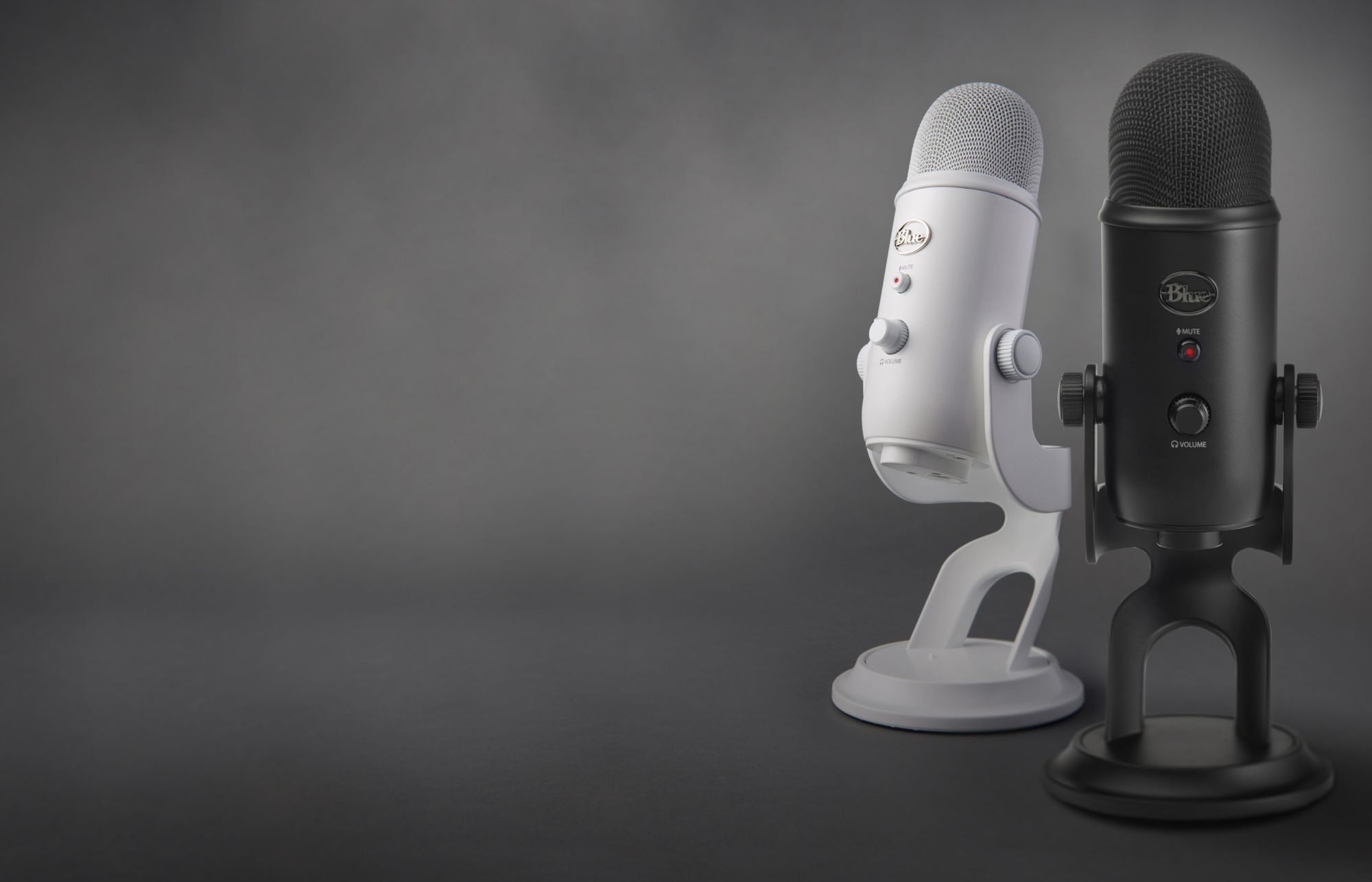Essentials
Podcasting Essentials
Related articles:
...And other questions you might need to ask yourself.
The Blue Yeti microphone has lots of benefits, especially for an indie podcaster who wants quality without breaking the bank. When compared to the functionality other microphones offer, for the price, this microphone is a solid choice that comes with the bonus of a sexy retro design.
But then why does it sometimes get a bad rep among podcasters over a less-than-desirable audio quality? I recently investigated, and came to the conclusion that the quality is not so much a microphone issue, but a user issue. Which is why I’ve come up with some best practices for podcasters who are using the Blue Yeti microphone.
Podcasters like Jena Kutcher, and basically anyone holding a microphone on their podcast art cover, are to blame for the Blue Yeti’s mass appeal. But its fun look sometimes confuses podcasters on how to properly use the microphone, as it’s designed.
Before I go into how to use the Blue Yeti correctly, let’s discuss the main features of this microphone.
• The Blue Yeti is a multi-pattern microphone. This means it picks up audio in four different patterns.
• The Blue Yeti is a USB microphone. This means you can plug it directly into your computer.
• The Blue Yeti is a side address microphone. This means the microphone accepts sound from a perpendicular angle. If you’re like me and forgot high school geometry, I’ll remind you what that looks like further down.
• The Blue Yeti has a front and back to it. This means that you could really screw up your audio if you speak into the back of the microphone. You might laugh, but this is happening to more podcasters than we realize.
The Blue Yeti USB microphone has four recording modes:
• Stereo Mode - This is best used to record audio from an acoustic guitar or choir because it captures on both left and right channels and from all four directions. You could put the microphone in the middle of the room and record the quartet harmonic sing-along you always dreamt of. Getting Glee vibes.
• Bidirectional Mode - This mode is best used for a two-person interview because the microphone will capture audio from the front and the back. I’m not in favor of this option, unless you don’t have a second microphone available for your guest, because of feedback, echo, and basically because you can’t record the tracks separately when you only have one input available.
• Omnidirectional Mode - This is best used when you want to record a group conversation, or ambient sound from the room. As a podcaster who cares deeply about the audience experience, I want to caution anyone who tries to use an omnidirectional microphone for a podcast because in most situations, the ambient sound recorded during an interview is very distracting to the listener. Do you really want to hear your dog/baby/neighbor/outside traffic in the podcast? The answer is likely “no”, so just avoid this mode.
• Cardioid Mode - IF YOU SKIP THIS ENTIRE PIECE AND ONLY READ ONE THING READ THIS. Cardioid mode is perfect for podcasting because it only records sounds that are directly in front of the microphone, not behind it, or from the sides. No dogs, airplanes, neighboring arguments or other ambient room sound leaking into your podcast.
Microphones of all types are available to podcasters depending on their needs and budget. As a video and podcast producer, I don’t prefer the Blue Yeti because it only has a USB cable option, and having two input/output options is crucial to production work. I use microphones that have both USB and XLR capabilities, which means I can plug into a mixer, or external recorder, and even into some cameras. By the way, the Blue Yeti pro does offer XLR input/ outputs.
That said, although the Blue Yeti is not exactly a cheap alternative to a startup podcaster, I do think it’s the affordable option for someone who wants quality, and decent audio with a side of cute.


Here are the do’s and don’ts for podcasters using a Blue Yeti microphone.
DO use your Blue Yeti at a perpendicular angle.
DON’T point the top of the microphone at your mouth.
DO Set your Blue Yeti to the cardioid (heart-shaped) pattern.
DON’T set your microphone to stereo, omnidirectional or bidirectional patterns.
DO Make sure your Blue Yeti is facing you correctly. Meaning you are speaking to the front of the microphone, the front has the mute button and “Blue” logo.
DON’T speak into the back of the microphone. The back of the microphone has the pattern and gain knobs.
DO Sit close enough to the microphone for it to pick up your voice without needing to turn up the gain. (See image below)
DON’T sit far away and use the gain button to “raise your voice” volume because the sound quality will be compromised.


To wrap this up, HERE’S A HOT MIC TIP FOR YOU: If this is too much information to retain, just remember that when recording a podcast, your Blue Yeti microphone should be set to the heart-shaped pattern symbol, because we all LOVE great sound quality, and this mode will make you LOVE the sound of your voice, and your HEART will be full with podcasting joy from the improved results. Ok, I’ll stop now.
Maribel Quezada Smith is a podcast and video producer with over 15 years of experience creating in TV and audio. She works with business owners and content creators who have higher goals for their brand and are ready to bring their podcast & video content to the next level. She’s also the co-founder of BIPOC Podcast Creators. Connect with her on IG or Twitter @Maribel_QS

